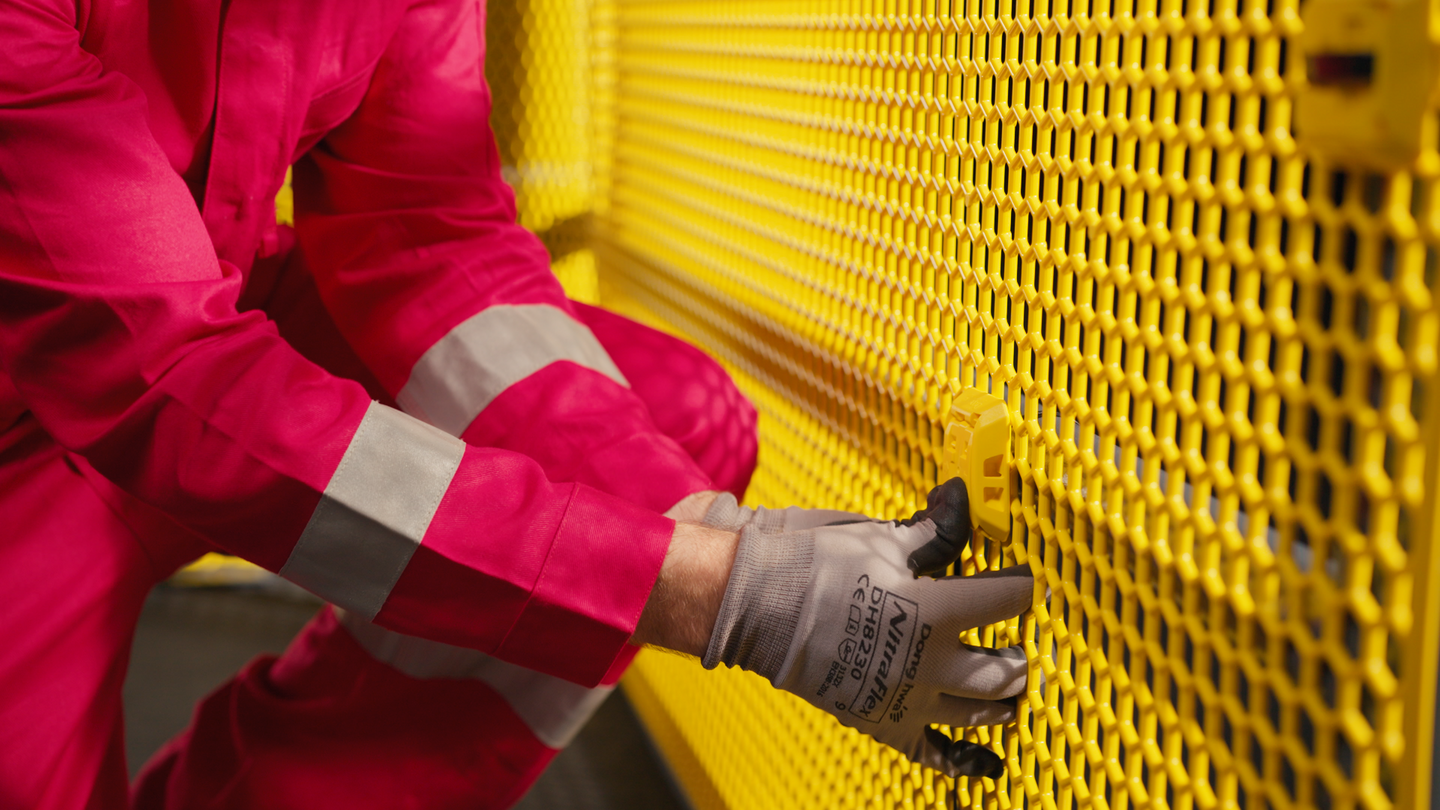As explored in our recent whitepaper ‘Slipping Through the Cracks’, the economic and safety arguments for installing robust and versatile barrier systems to mitigate Dropped Object risks are clear.
Given the commercial pressures faced across industries from Oil & Gas to Power Generation, Mining to Marine, it is important to acknowledge the size of the challenge faced by HSE decision makers. Not only must they present a strong business case to senior management; they must also hold suppliers to account during procurement discussions, ensuring that the solution they install effectively meets their long-term needs.
With this in mind, we have outlined six of the key questions HSE decision makers should ask their barrier supplier, focusing on the installation stage of a barrier’s lifecycle.
Installation is a key constituent of the total lifetime cost of using a barrier, particularly if the system is set to be removed and/or reinstalled. Understanding this cost should be a critical part of procurement decision making.
-
How many hours of manual labour will be required to install and remove the barrier?
Many barrier systems, while coming in at a low upfront cost, require extensive, labour-intensive, and therefore expensive installation, reinstallation and removal processes. This can lead to substantial long-term expenditure, and the more labour-intensive the installation, the greater the amount of downtime. In sectors where availability is a core metric, the cost of downtime may far outweigh equipment, installation and maintenance costs.
When choosing a barrier system, it is key to establish how the number of manual labour hours and the amount of downtime stack up in comparison to other products in the market and, in turn, weigh up this cost with other factors, such as the overall lifetime of the system.
-
Are specialist tools required to install the barrier?
Certain barrier systems require the use of power and hand tools, while others – such as expanded metal – require hot works, conducted by trained specialists, and regular painting thereafter.
This is a problem for companies in industries such as Oil & Gas, as hot works cannot be undertaken in the vicinity of hydrocarbons or personnel. This adds further potential downtime to barrier installation operations, as the area in question must often be cleared of technicians due to the fire risks of using hot works around hydrocarbons.
The most versatile Dropped Object prevention barriers, such as the Dropsafe Barrier, require minimal tools for installation.
-
Is adequate training provided for installation and removal?
By providing a training programme for the installation of a barrier system, the provider enables the facility manager to perform the installation in-house on their own terms, avoiding the cost of outsourcing the installation to a contractor.
In order to meet this requirement, some barrier suppliers now offer access to online training programmes specifically tailored to educate installers on how to install the barrier on their particular facility.
-
Is there a dropped object risk during installation?
When installing a barrier system with the purpose of mitigating the risk of Dropped Objects, the last thing you want is to conduct the installation in a way that involves this risk.
The installation of some barrier systems, such as bolted metal fencing, create a potential hazard of components falling and becoming Dropped Objects both during and after installation, such as bolts and screws.
Furthermore, where tools are used for installation, a further risk is posed of these tools being dropped from height. In this case, installation teams should use equipment such as lanyards and pouches to tether tools to their PPE to avoid this risk.
-
Can the barrier be installed with minimal attaching components?
Typically, the fewer attaching components on a barrier system, the better. For example, expanded metal and the Dropsafe Barrier both require minimal attaching components.
Systems such as bolted metal fencing however use large numbers of small components, such as bolts and screws. Other barriers too, involve multiple custom attaching components, which can pose a significant Dropped Object risk in themselves.
-
Can the barrier be installed as a permanent or temporary measure?
Ideally, HSE decision makers should invest in a barrier solution which is robust enough to be installed as a permanent measure, but versatile enough to be installed on a temporary basis if required, such as when conducting maintenance.
The Dropsafe Barrier has commonly been deployed as part of rolling maintenance programmes at sites, including power generation facilities – where the ability to move the panels from one unit to another can provide greater flexibility and versatility and create cost savings. Many do choose to install the system on a permanent basis however, acknowledging the cost-effectiveness of the product as a long-term solution.
For a more detailed cost comparison of the Dropped Object prevention systems available on the market, click here to download your copy of our whitepaper ‘Slipping Through the Cracks’.

